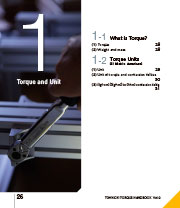
1. Torque and Unit
Explains what torque is, the difference between weight and mass, units of measurement, and conversion methods.
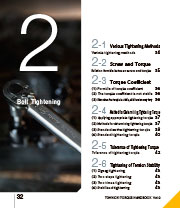
2. Bolt Tightening
Summarizes different tightening methods, and explains the relationship between bolts and torque, torque coefficient, how to determine tightening torque, tightening torque tolerance, and axial tension stability (tightening procedure).
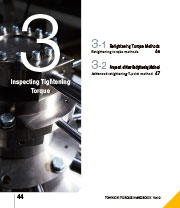
3. Inspecting Tightening Torque
Summarizes how to inspect tightening torque, and explains retightening torque methods, Tohnichi’s own new retightening method (the T-point method).
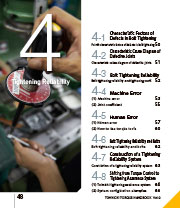
4. Tightening Reliability
Explains the characteristics of tightening failures, factors causing such failures, bolt tightening reliability, machine errors, human errors, tightening reliability and bolts (Fcon), establishment of a bolt tightening reliability system, and tightening assurance systems.
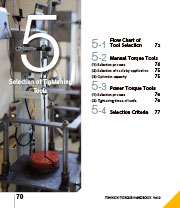
5. Selection of Tightening Tools
Explains general model selection flow charts, procedure for selecting manual torque devices, how to select by purpose, how to select from torque capacity, procedure for selecting manual torque equipment, materials for selecting from tightening time, and tightening tool selection criteria.
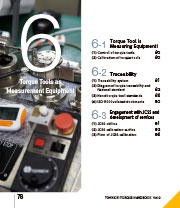
6. Torque Tools as Measurement Equipment
Provides information related to ISO standards for measurement control, how torque devices are measuring equipment, traceability, JCSS-relevant information detailing the relationship between ISO17025 and an MRAs, JCSS calibration services, accuracy and uncertainty, durability accuracy for Tohnichi’s torque equipment, the purpose of daily checks and periodic calibrations and the selection of testing machines, and a comparison of Tohnichi, JIS and ISO standards.
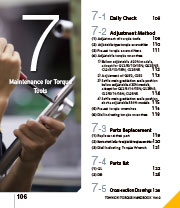
7. Maintenance for Torque Tools
Explains daily checks, torque equipment adjustment methods, and how to replace parts, and gives examples of parts lists and cross-sectional drawings.
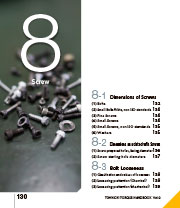
8. Screws
Explains dimensions of ISO bolts and non-ISO bolts, washer dimensions, bolt hole diameters, countersunk hole diameters, prepared hole diameters, and bolt loosening and how to prevent it.
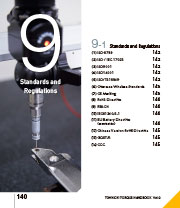
9. Standards and Regulations
Explains pertinent parts of Japan’s Foreign Exchange and Foreign Trade Law, JIS and ISO standards governing torque control and bolts, wireless standards outside Japan, and CE marking, and summarizes RoHS, REACH, GOST-R, and CCC.
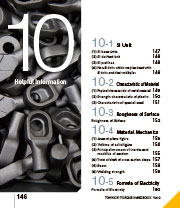
10. Helpful Information
Provides helpful information on units, material characteristics & mechanics, surface roughness, and the formula of electricity.
